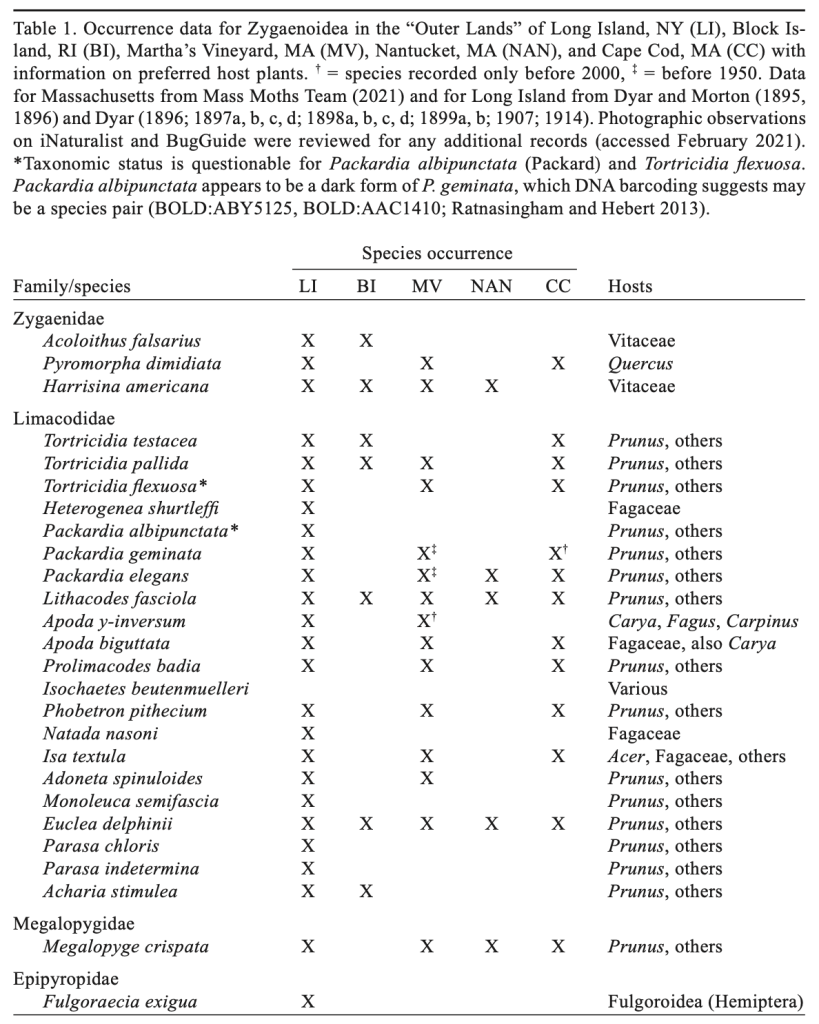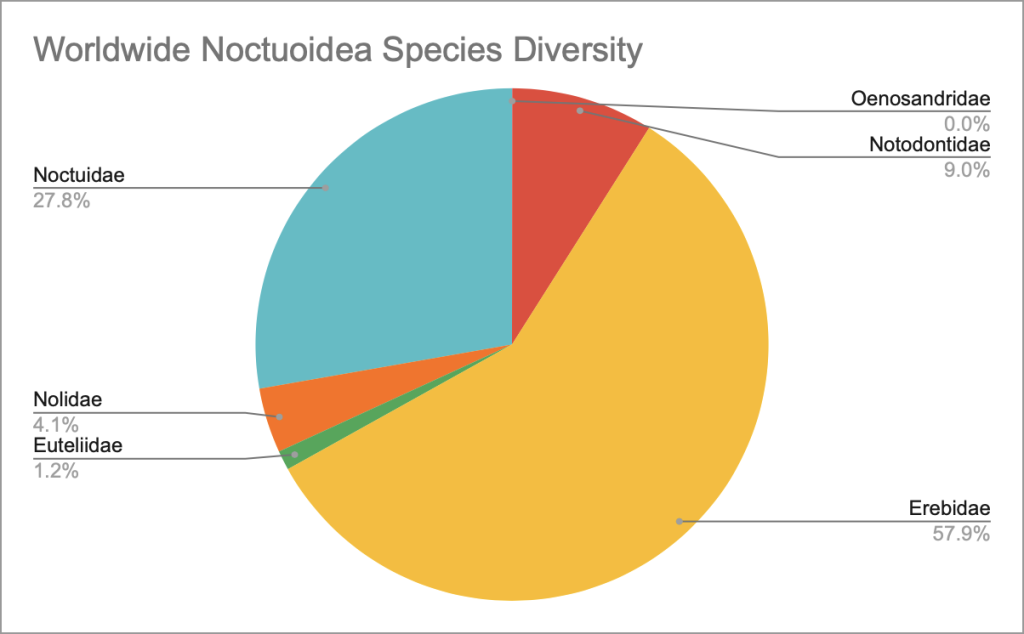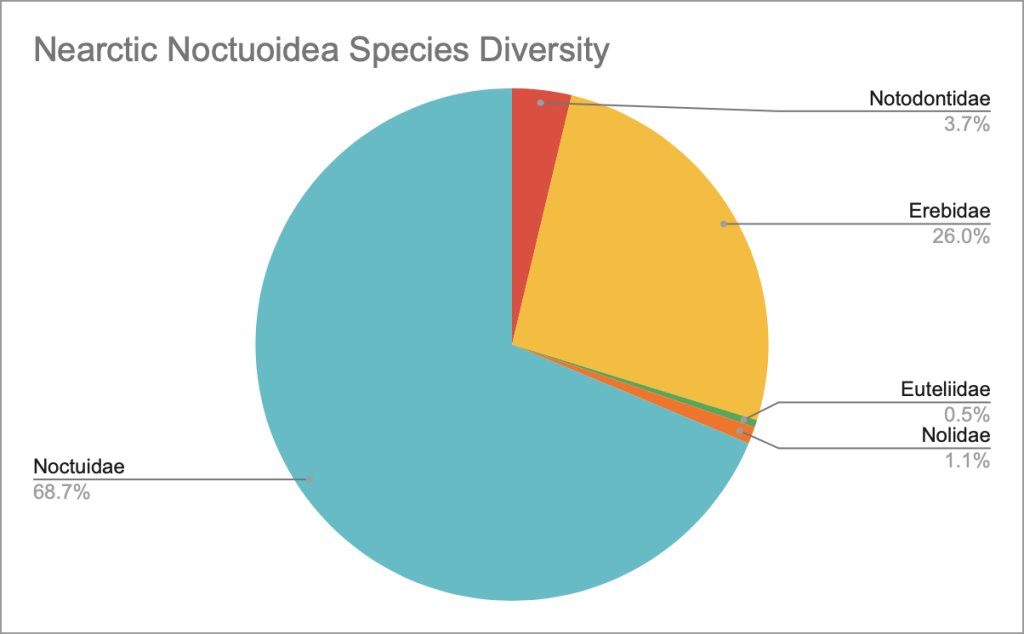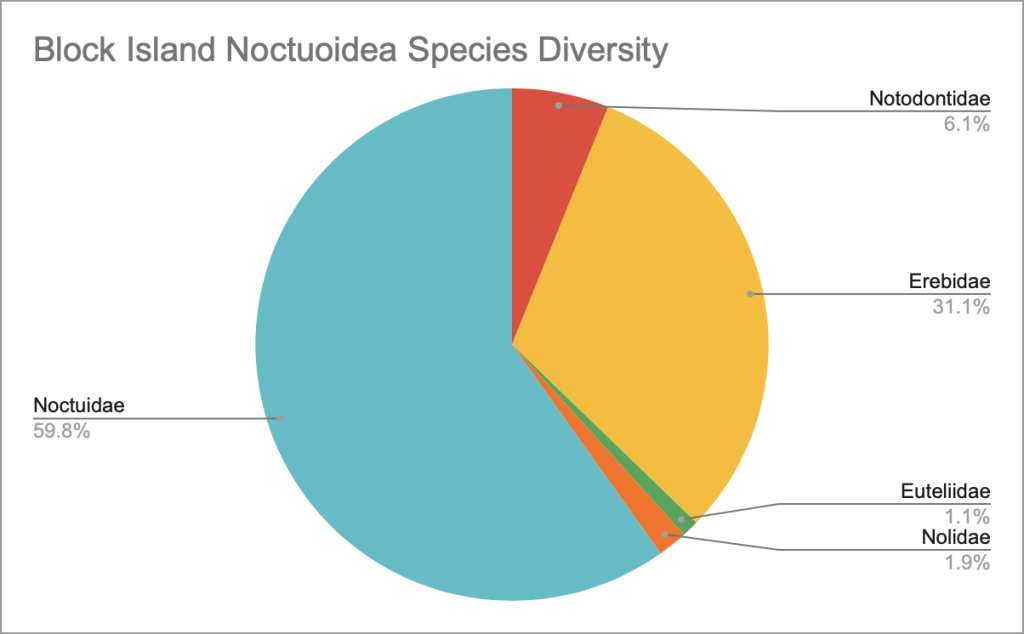Zygaenoidea
7 species in 2 families (Zygaenidae and Lasiocampidae) are known from Block Island. Two additional families, Megalopygidae and Epipyropidae, are each represented on nearby Long Island by one species but are absent from Block Island.
I published a paper on the Zygaenoidea of Block Island in 2021; the information therein all remains essentially current. The most notable finding included in the paper is discussed below.
Interestingly, several species of Zygaenoidea are common on Long Island and in Southeastern Massachusetts yet are absent from Block Island. Prolimacodes badia (Hübner) and Phobetron pithecium (Smith) are common on Long Island and throughout southern New England and polyphagous on woody plants, notably including cherry. They surely would be common on Block Island if they occurred on the island, where suitable host plants occur in abundance. Packardia geminata (Packard), Packardia elegans (Packard), and Adoneta spinuloides (Herrich-Schäffer) are less common in the region but all have been reported to feed on cherry, among other trees and shrubs; P. geminata and A. spinuloides have also been recorded on bayberry, which is abundant in large portions of Block Island. Isa textula (Herrich-Schäffer) feeds on, among other trees, maples; red maples occur uncommonly on Block Island. The sole representative of Megalopygidae in the region, Megalopyge crispata (Packard), has been recorded on Long Island, Martha’s Vineyard, Nantucket, Cape Cod, and mainland southern New England. Most larvae photographed and added to iNaturalist from the Outer Lands as of 2021 were found on either cherry or bayberry, so the species would do well on Block Island if it occurred there.
All the aforementioned species likely occurred on Block Island in pre-colonial times but were extirpated when the island was almost entirely cleared of trees in the 17th and 18th centuries. That they have not returned in the several decades since suitable host plants have proliferated on Block Island strongly suggests that they disperse poorly. Notably, the zygaenoid fauna of Nantucket, which like Block Island was deforested, though not as thoroughly, and has since partially recovered, is similarly depauperate to that of Block Island.

Hunt, A.S., 2021. Moths of Block Island (Rhode Island, USA) I: Zygaenoidea. Northeastern Naturalist 28(4): 497–510.


